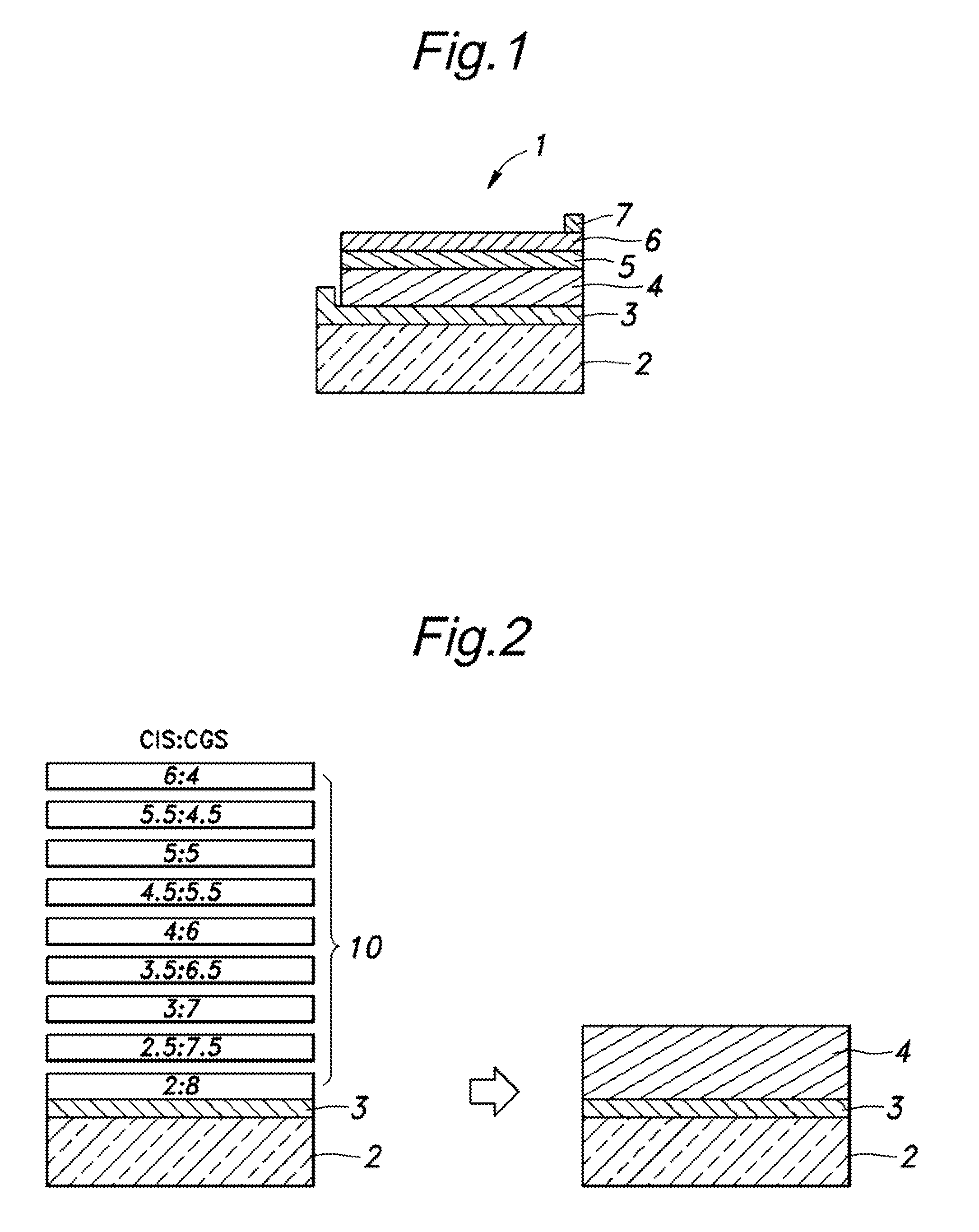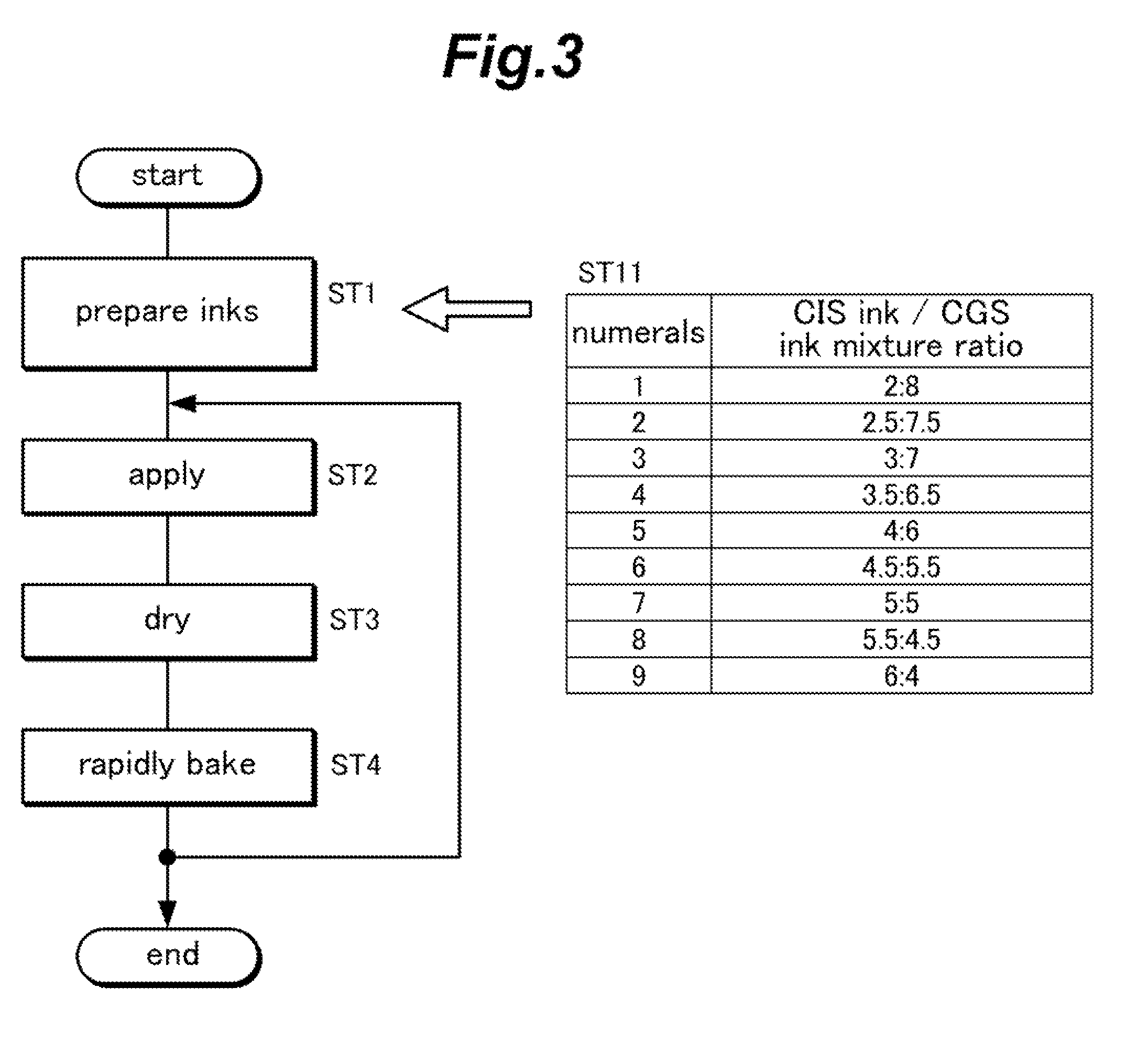Method for forming an absorber layer of a thin film solar cell
a thin film solar cell and absorber layer technology, applied in the direction of sustainable manufacturing/processing, final product manufacturing, inks, etc., can solve the problems of unsuitable mass production solar cells, unsuitable for large surface area devices, unsuitable for mbe process, etc., to achieve low cost, improve solar cell efficiency, and large surface area
- Summary
- Abstract
- Description
- Claims
- Application Information
AI Technical Summary
Benefits of technology
Problems solved by technology
Method used
Image
Examples
Embodiment Construction
[0019]A preferred embodiment of the present invention is described in the following with reference to the appended drawings. FIG. 1 is a diagrammatic sectional view of a chalcopyrite solar cell incorporated with an absorber layer embodying the present invention. The solar cell 1 is provided with a laminated structure including a substrate 2, a back electrode layer 3 forming a positive pole of the solar cell 1, a CIGS absorber layer 4, a buffer layer 5 and a transparent electrode layer 6 stack one above another in that order. The solar cell 1 is additional provided with an electrode 7 electrically connected to the transparent electrode layer 6, and forming a negative pole of the solar cell 1.
[0020]The substrate 2 consists of sheet glass in the illustrated embodiment, but may also consist of other materials such as a metallic foil, a plastic sheet and so on which may be more light weight and / or flexible. The back electrode layer 3 consists of a Mo film in the illustrated embodiment, b...
PUM
| Property | Measurement | Unit |
|---|---|---|
| thickness | aaaaa | aaaaa |
| thickness | aaaaa | aaaaa |
| particle size | aaaaa | aaaaa |
Abstract
Description
Claims
Application Information
 Login to View More
Login to View More - R&D
- Intellectual Property
- Life Sciences
- Materials
- Tech Scout
- Unparalleled Data Quality
- Higher Quality Content
- 60% Fewer Hallucinations
Browse by: Latest US Patents, China's latest patents, Technical Efficacy Thesaurus, Application Domain, Technology Topic, Popular Technical Reports.
© 2025 PatSnap. All rights reserved.Legal|Privacy policy|Modern Slavery Act Transparency Statement|Sitemap|About US| Contact US: help@patsnap.com



